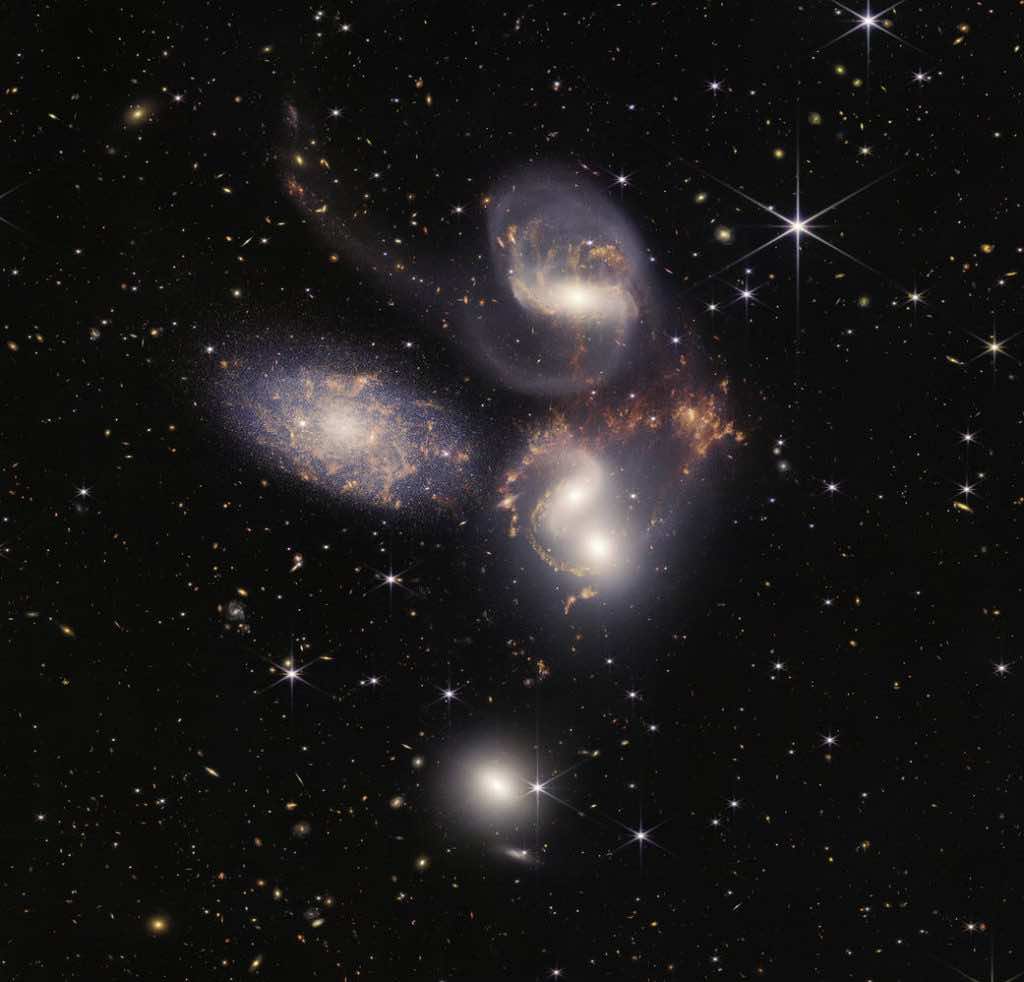The James Webb telescope is delivering wonders as was expected. Yesterday’s images have taken the internet by storm, and a score of images are pouring in. The grandest of which is details of a galaxy group known as Stephan’s Quintet.
What is fascinating about the image is that it is a compilation of around 100 image files. Has approximately 150 million pixels and shows how interacting galaxies trigger star formation in one another and how gas in galaxies is being disturbed.
The images shared by the James Webb telescope are the sparkling clusters of millions of young stars and sweeping tails of gas dust and stars being pulled from several galaxies due to gravitational interactions.
Stephan’s Quintet is an amalgamation of five galaxies; however, only four of them are comparatively close together. The one on edge, called NGC 7320, is much closer to Earth than the others, lying 40 million light-years away from our planet. It is in the front of the image, with the other four – NGC 7317, NGC 7318A, NGC 7318B, and NGC 7319 – located behind it, at a distance of about 290 million light-years from Earth.
Because 7320 is the closest of the galaxies, the telescope’s Near-Infrared Spectrograph (NIRSpec) and Mid-Infrared Instrument (MIRI) were able to make out individual stars. As an added advantage, a “vast sea of thousands of distant background galaxies” can be seen in the background.
Researchers also believe that such closely knit galaxies would have been a more common feature during the early time. In addition, quasars, very energetic black holes, would also have been a phenomenon back then as their superheated infalling material might have fueled them.
Source: NASA

